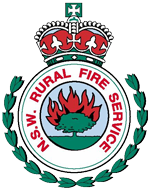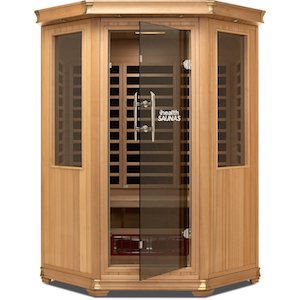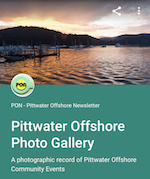Community Vehicle Notice
Transportation of Goods in Community
Vehicle
The service notice
covering the carriage of goods using the community vehicle states:
| The vehicle does
not carry furniture, whitegoods, building materials,
etc. unless small in size and quantity. The driver is not required to
lift heavy items and reserves the right to refuse to carry such goods
and materials but refer you to an Island commercial carrier. |
The community vehicle which is operated by Easylink Community Services
is subsidised by the NSW State Government and is intended to help
Island residents with carriage of their accompanied shopping, luggage
and limited quantities of DYI materials. It is not to be used to carry
oversize or heavy items.
The General Manager of Easylink on a recent visit to review operation
of the Community Vehicle advised that it was not to be used to carry
items that do not fit within the tray.
Accordingly, we are under instruction not to carry any goods that
overhang the tray (eg. timber and flat packs) or that are otherwise so
large that they cannot be secured under the tonneau cover using its
stretchy cord as a tie down. We are not to carry goods that require
additional tie down ropes to secure them.
Drivers have no discretion in this matter and are under instruction to
operate the vehicle within the guidelines.
Matt Lakeman is available to transport loads that are ‘off limits’ but,
as he may not be able to do this at short notice, customers are advised
to ring the day before to schedule a pick up.

Scotland Island Rural Fire
Brigade
Get Ready Weekend and Open Day
Saturday 23rd September,
9-3.00pm
The Bush Fire Season has
started early this year. Come and visit us at the Scotland Island Fire
Station on Sunday 23rd September from
10am as part of the Rural Fire Service Get Ready Weekend.
There will be something interesting for everyone - grab a Bushfire
Survival Plan Kit, talk to local Brigade members, climb through the
trucks, participate in a community discussion about preparing your
property, watch a demonstration or grab something from the BBQ. 
-
11:00am
First Aid
Demonstration
-
12:00pm
Preparing Your
Property
-
12:30pm Fire
Extinguisher
Demonstration
-
1:00pm
Pile Burn
Demonstration
-
1:30pm
Structure Fire
Demonstration
-
2:30pm
First Aid Demo
(repeat)
Food and Fun for all the Family
Hope you can join us at some stage during the day.
Scotland Island Demographics
How are we different?
A comparison between
Scotland Island and the rest of Australia
by Roy Baker
Well-educated, well-paid and middle-aged: these are typical
characteristics of a Scotland Islander, according to the 2016 census.
The Australian Bureau of Statistics’ latest census recorded that 580
people were ‘usually resident’ on Scotland Island on Tuesday, 9 August
2016. But the island’s population is seasonal: around 40% of the 359
private dwellings on the island were classed as ‘unoccupied’ that
winter’s night. Given the number of weekender and holiday homes, the
island’s summer population could easily reach a thousand.
In terms of household composition,
Scotland Island is not particularly different from any other suburb.
Out of the 209 island dwellings that were occupied in winter 2016, 36%
provided housing for a couple with one or more children, 27% contained
couples with no children, 25% were occupied by an adult living alone
and 11% housed a single parent with one or more children. The average
number of people per household was 2.6. These figures are all on par
with the rest of Australia. Our gender mix is also similar to Australia
generally. Of the 580 people living on the island in August 2016, 51%
were male: the figure for the nation as a whole is 49%.
Where we start to look different is in terms of median age:
45 for the island, 38 across Australia. That said, the island had a
larger proportion of children: in 2016, 21% of the island’s permanent
population was under the age of 15, compared with 19% for Australia as
a whole. What’s more, a much smaller slice of the island’s population
was aged 75 or above: 3%, against 7%.
Given that we have slightly more children than usual, and far fewer of
us are elderly, what accounts for the older median age? The island has
a dearth of young adults. Barely 12% of islanders were in their 20s or
30s, whereas 28% of Australian residents are aged between 20 and 39. In
contrast, the island had a whopping 40% of its population in their 40s
or 50s, as opposed to 26% across the nation. Being older, the typical
islander has had longer to marry (54% versus 48%), but also more time
to separate or divorce: 17%, against Australia’s 12%.
Thus far we islanders don’t seem so different from other Australians.
We are just more middle-aged. But we start to see bigger differences
when we look at our ethnic diversity.
In some respects our suburb is much the same as many others. For
instance, around two thirds of islanders were born in Australia, which
is virtually identical for Australia as a whole. What is more, the
chances of meeting an islander with both parents born in Australia are
not so different from those of finding someone with similar parentage
in another suburb: 43% for the island, 47% for elsewhere.
The difference lies more in where the island’s 33% migrant population
comes from. In terms of countries where English is widely spoken, New
Zealanders are far more common on the island than elsewhere in the
country, as are South Africans, Canadians and Americans. As for those
from non-English speaking backgrounds, Europeans seem to be
disproportionately well represented on the island. For instance, as
proportions of the population relative to the rest of Australia we have
six times as many Germans, five times the number of Dutch and three
times as many French.
But it’s the island’s English contingent that stands out most. Nine
percent of islanders were born in England, compared to 4% in a typical
Australian suburb. Eleven percent of islanders have a mother born in
England and 15% have a father born in that country: the figures for the
rest of Australia are 5.6% and 6% respectively. But these figures only
partly explain why a massive 36% of islanders identify their ancestry
as English, whereas the figure for Australia as a whole is just 25%.
Scotland Island may not be entirely representative of the rest of
Australia in terms of ethnicity, but it is education and employment
that really mark us out. As at August 2016, at least 64% of the
island’s permanent population aged 15 years or above had some kind of
post-secondary education, as opposed to 47% in Australia as a whole.
Perhaps as a result, a smaller proportion of us were unemployed: 3.6%
of islanders self-identifying as part of the nation’s work force were
out of a job, versus 7% for Australia. That said, a slightly smaller
proportion of the island’s labour force worked full-time: 54% as
against 58%. Instead, part-time work is more prevalent on the island
relative to Australia: 38% versus 30%.
Returning to education, the most striking finding is that 38% of the
island’s permanent adult population had a university degree, against
22% for Australia. This ties in with the fact that 55% of those in
employment identified as ‘professionals’ or ‘managers’: the figure for
Australia as a whole is 35%. If it feels as though you are surrounded
by academics, consultants, architects or people in IT then you may be
right: 15% of island workers fit one of those categories, as opposed to
4% of Australian employees as a whole. Just 19% of us engaged in manual
work, as against 29% for the rest of the country.
As you would expect, our incomes
reflect the work we do. Relative to workers across Australia, it would
seem that employed islanders earn around half as much again. But the
difference between Scotland Island and the rest of Australia is less
marked when it comes to median household income: here the island was
just 25% ahead of the rest of Australia. Half of the families
permanently resident on the island had an annual income of $113,000 or
above, compared to $90,000 for Australia as a whole. Almost a quarter
of households had an income of $156,000 pa or more, compared with 16%
across Australia. 82% of us owned our home, either outright (36%) or
with a mortgage (46%). Australians in the rest of the country were
almost twice as likely to rent but, unsurprisingly, they pay less.
Given our perennial battles over car parking, it is worth noting that
the proportion of employed islanders travelling to work by public
transport is twice that of Australia. 12% of the island’s employed
adults worked at home, versus less than 5% of Australia’s total
workforce. But that still leaves over 51% of island workers driving to
work: the figure for the rest of Australia is 62%.
Finally, what are our values and
beliefs?
In the 2013 federal election, 44% of those voting on Scotland Island
gave the Greens their first preference, way more than in almost any
other suburb. As for religion, the 2016 census suggests that the
proportion of those with no religion is twice as large on the island as
it is in Australia as a whole.
Putting all of this together, who typifies Scotland Island’s permanent
population? Taking the ‘typical’ islander to mean someone whose
individual characteristics reflect each of those most commonly found on
our island, he is a man in his early 50s, married with children in
primary school. He thinks of his ancestry as English, but was born in
Australia to parents also born in this country. He is a
university-educated ‘professional’, probably an academic or IT
specialist, driving to his full-time job in order to pay off the
mortgage on his three-bedroomed house. Sound familiar?
More details relating to the 2016 census of Scotland Island can be
found here: http://quickstats.censusdata.abs.gov.au/census_services/getproduct/census/2016/quickstat/SSC13505.
Roy Baker
2018
House to Lease
Come and Live on the Sunny Side
- Close to Tennis Court Wharf
- 3 bedrooms
- 3 balconies with beautiful Pittwater views
- Long rental
Phone Annette
0410 007 501
For Sale 
Three adjustable bar stools for sale $60 total
Lou 0414991110
Infrared Sauna for Sale!
Used but in excellent condition
3 Seater
Lifetime heater warranty
Plugs in 240v
Dimensions 1.62w x 1.43d x 1.95h
How Infrared Sauna Works
iHealth Saunas work by heating the body deeply using infrared rays and
therefore increasing the circulation naturally resulting in pain
relief, weight loss and increased energy.
The infrared panels are specifically designed to emit energy at the
same wavelength as that emitted by the human body. As an added benefit
iHealth Far Infrared Saunas operate at substantially lower temperatures
than conventional steam/hot rock saunas, permitting extended and more
comfortable sauna sessions. Our body readily absorbs far infrared or
healthy light (energy) to a depth of 45mm creating a deep, penetrating
heat that relaxes, soothes and loosens sore joints and muscles.
RRP $7,790
For sale $4,500
Call Ryan for details 0413 365 410..
2 Stroke Motor For Sale 
Yamaha 30 Hp 2 stroke engine
Full service history
$1200
Call 0412 199 797
N.B number show last week
0410688008 wass not correct
A complete set of past electronic newsletters since May 2000 can be
found and read at https://ymlp.com/archive_gesgjgm.php or
by clicking
here or by visiting the Mona Vale Library.
The Island website is at www.scotlandisland.org.au

To Contribute
If you would like to contribute to
this newsletter it's easy!. Send an e-mail to the editor
(editor@scotlandisland.org.au) or by clicking here. Type your contribution (100 words or so would be fine)
and assuming it is of general interest to the community, does not
include matter of a political nature and is not offensive, it will
appear next month.
Subscription Information
To get on and off this newsletter, click here or got to: http://www.scotlandisland.org.au/signup
.
To change your address, click the
'modify' link at the bottom of this newsletter or send an email to the editor@scotlandisland.org.au
Follow the PON
The Online Local Contacts Guide
Click HERE to load
The Editor
and the publisher disclaim responsibility for any injury to persons or
property resulting from any ideas, articles or products referred to in
this publication. Further, the views
expressed in this newsletter are not necessarily the views of the
Scotland Island Residents Association (SIRA), or the Western
Pittwater Community Association (WPCA)
|










